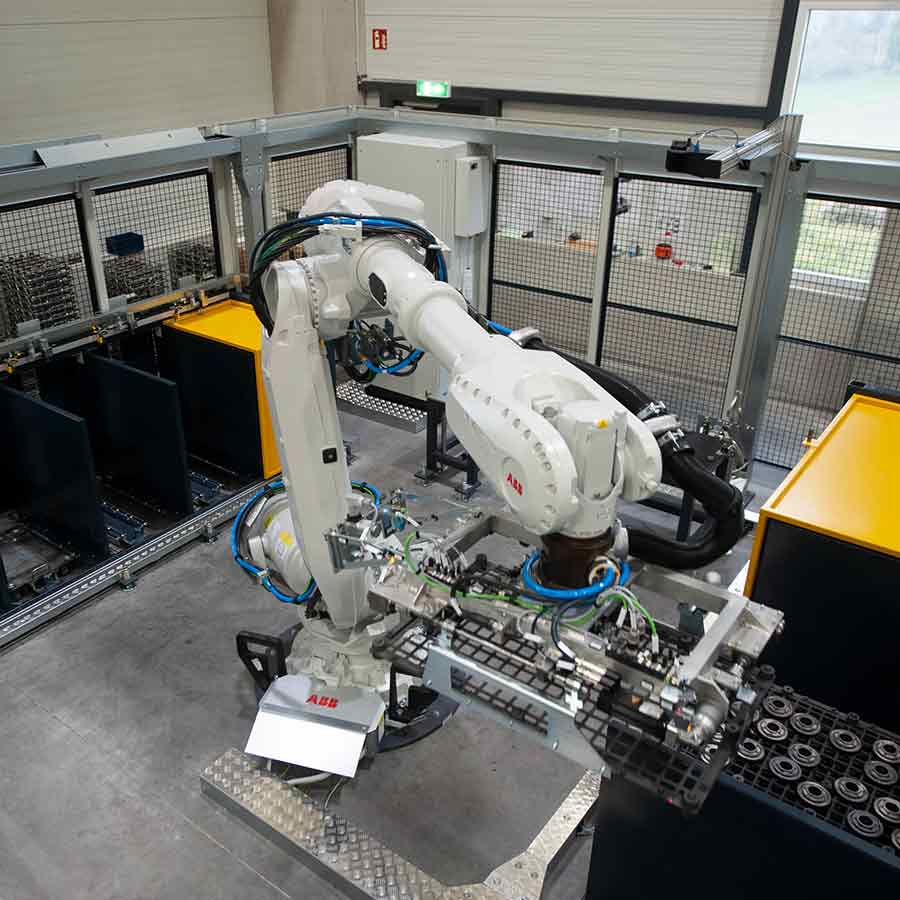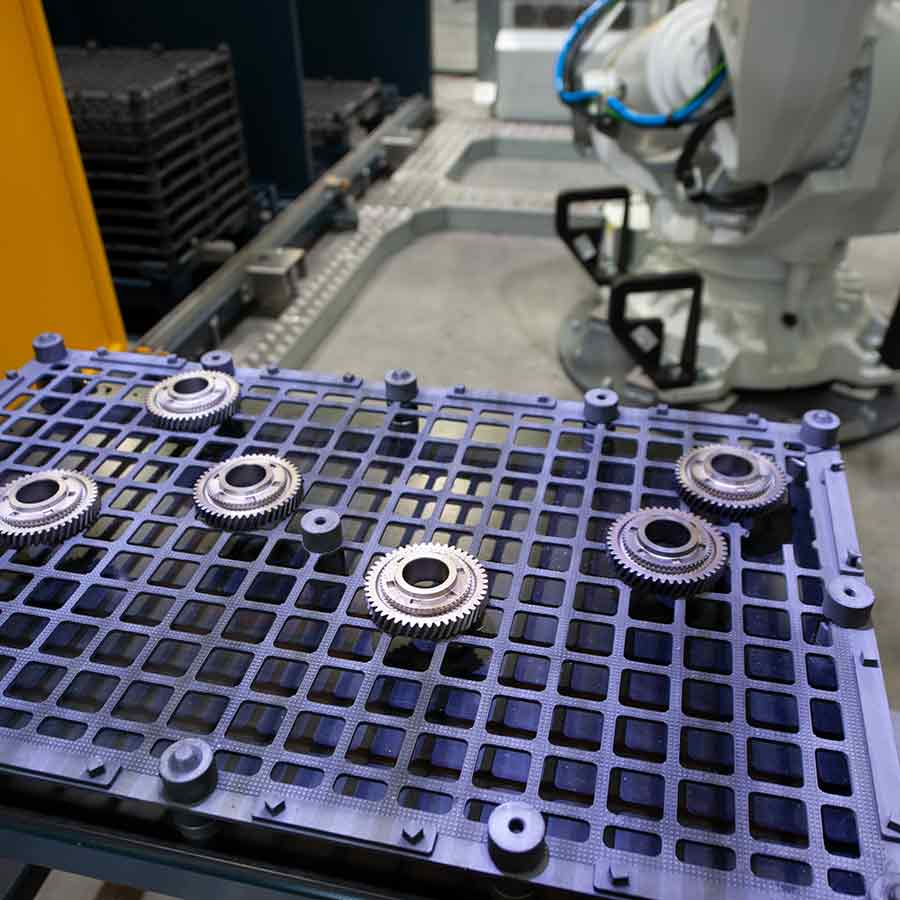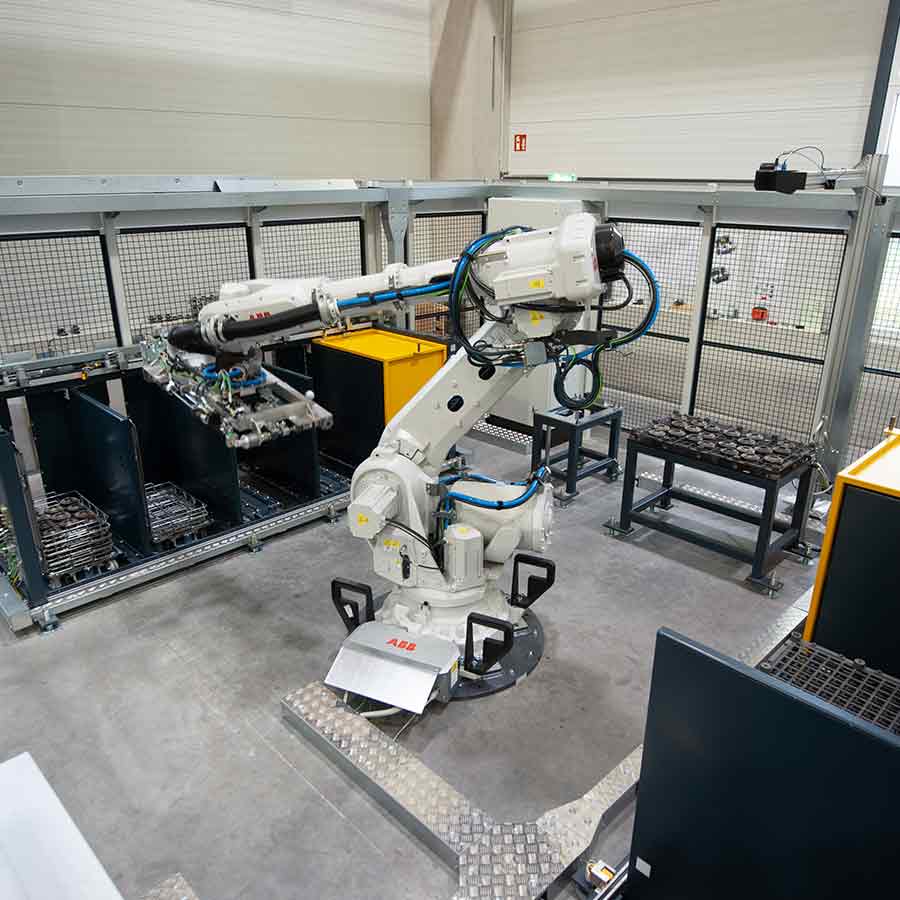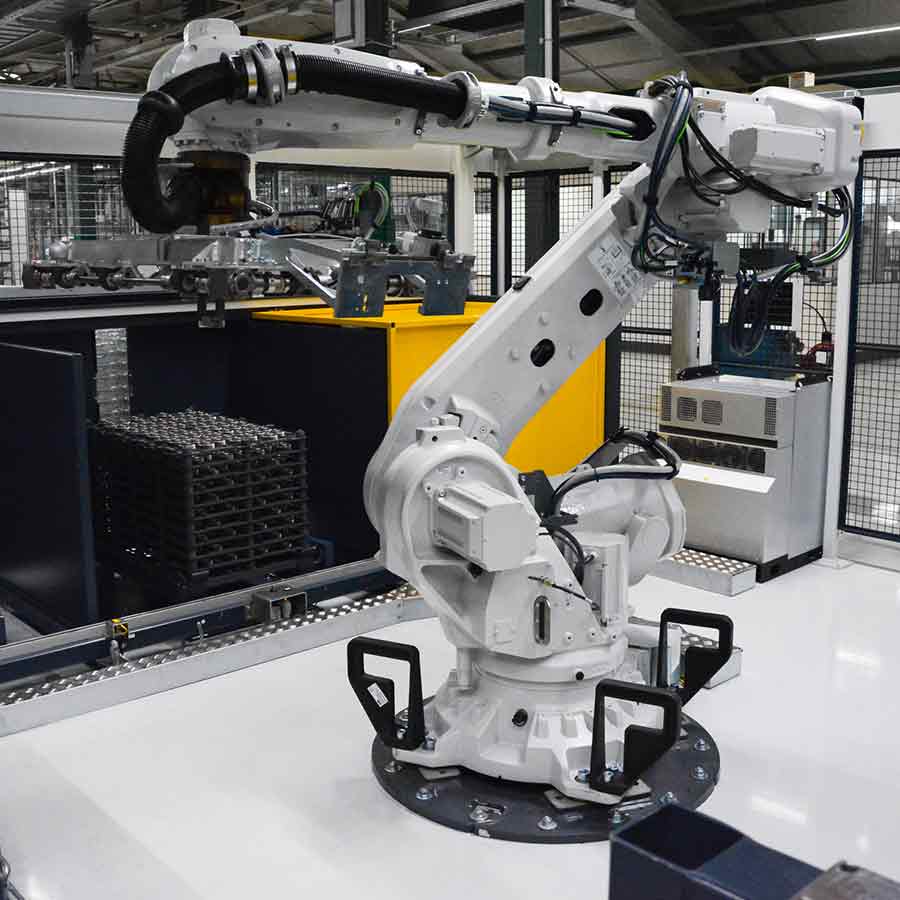Bin Picking – ein Plus für Ihre Produktion
Go for Flexibilität, Ergonomie und Nachhaltigkeit
An innovative restacking cell helps the customer to relieve his employees and to master a high variety of parts. Preliminary simulation and cycle time analysis ensure fast commissioning and cost savings.
Unlocking Industry 4.0
The state-of-the-art bin picking cell transforms complex industrial processes by introducing intelligent robotics. Laborious manual work is replaced by forward-looking automation. The innovative stacking cell thus offers an increase in flexibility, ergonomics and sustainability. In industry too, the trend of the electric future is evident – in terms of sustainability, the cell was realised without pneumatics. Optimising the cycle time helps the customer – a Canadian-Austrian automotive supplier – to save time and costs.
Precision and reliability thanks to 3D camera technology
For the hardening process, the robot automatically removes the transmission parts from a wire basket and loads them onto a hardening frame. After the hardness process, the components are put back into wire basket. The challenge for the robot lies in the detection and processing of objects with different geometries, which are located in containers in a disorderly manner. The high-performance, integrated 3D camera provides and processes image data of the components in the hardening frame. Due to this precise, three-dimensional determination of the position and orientation of the parts, the gripping path of the robot can be triggered precisely and quickly. The task to be mastered here lies in the required degree of emptying of the frames of 100%. In this point, this application differs from the previously classic bin picking applications on the market.
%
No Pneumatik
%
Reliable
Cooperation of man and robot
“The employees work side by side with the robot”, says the customer, who is pleased about the arrival of this technology in his factory. Although laborious handling operations are taken over by the robot, human tasks are not replaced; instead, an efficient and stable cooperation is created. The employee takes over core logistical tasks and feeds the stacked hardening frames and wire baskets to the cell via a container station. In addition to the actual repacking of the components, the robot is also able to organise full and empty containers and thus ensure an uninterrupted production operation.
New dimensions of flexibility
Parts handling for a wide range of variants of up to 60 different component types is achieved through a specially developed production database with intuitively operable type editor for the different packaging patterns and component dimensions. As a result, no complex gripper exchange is necessary for different parts and a type extension in newly defined limit values is easily possible. The customer is able to teach a new type within 30 minutes without the support of PLC or robotic personnel.
SEARCH
PUBLISHED
FOLLOW US



